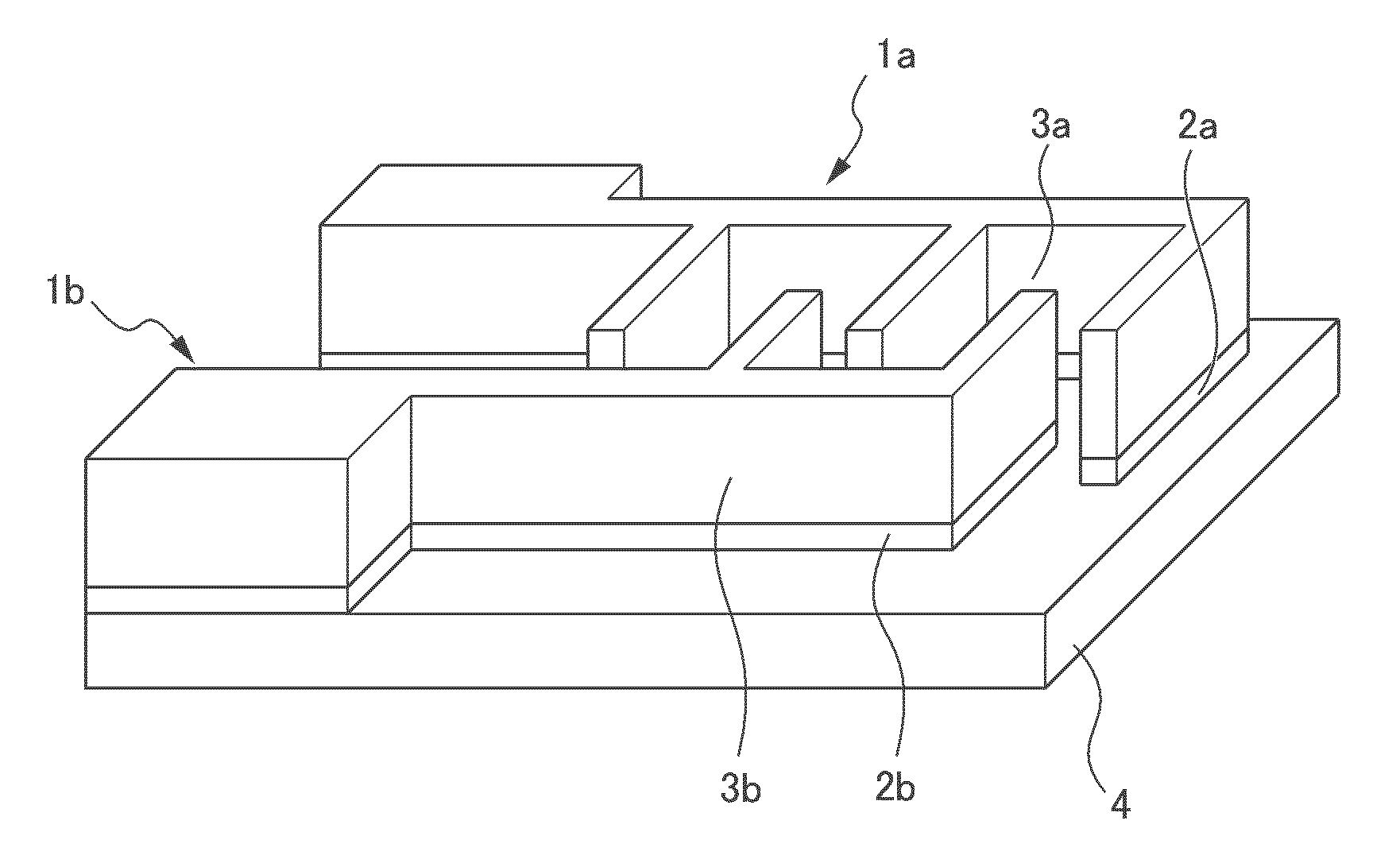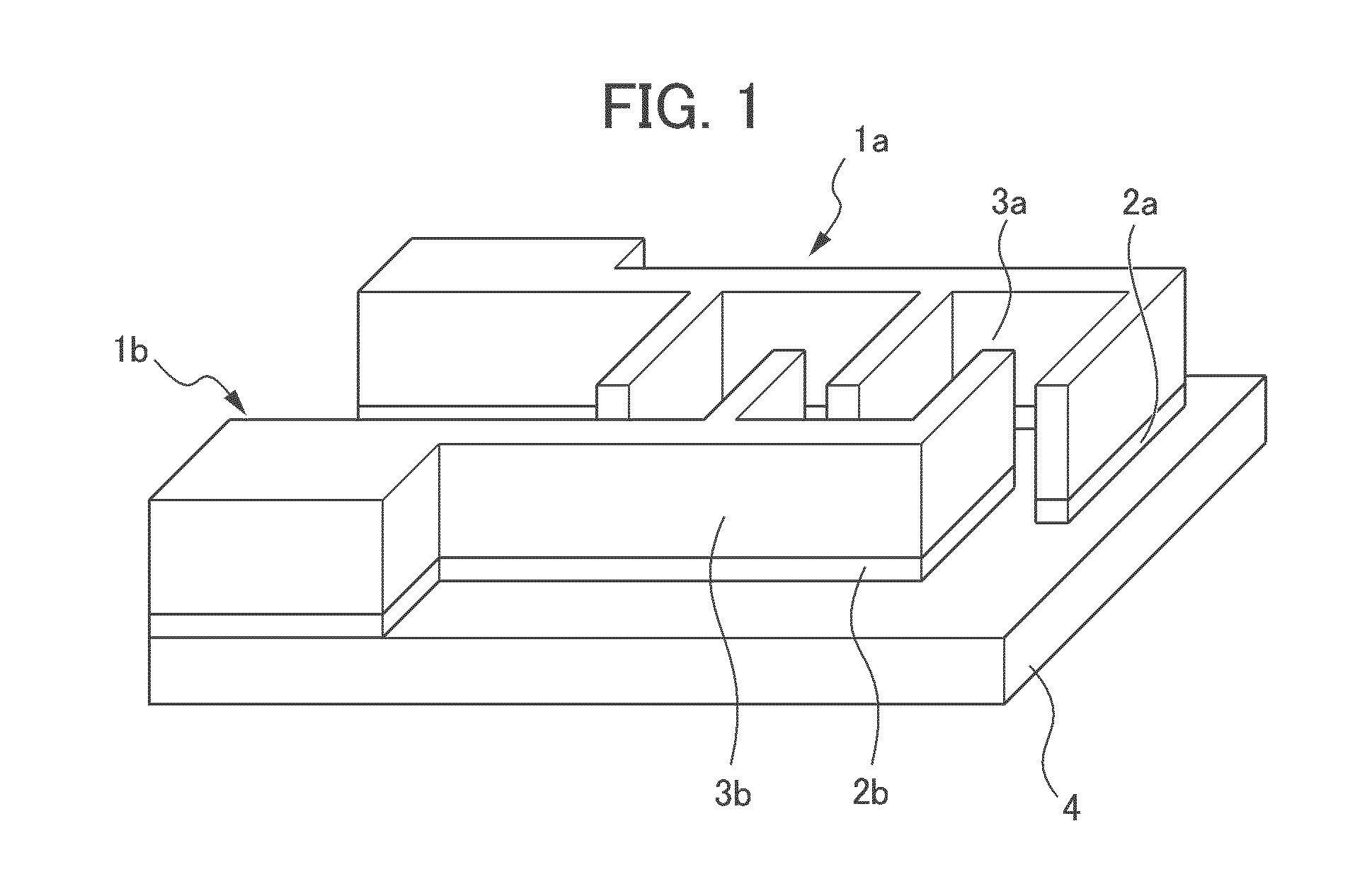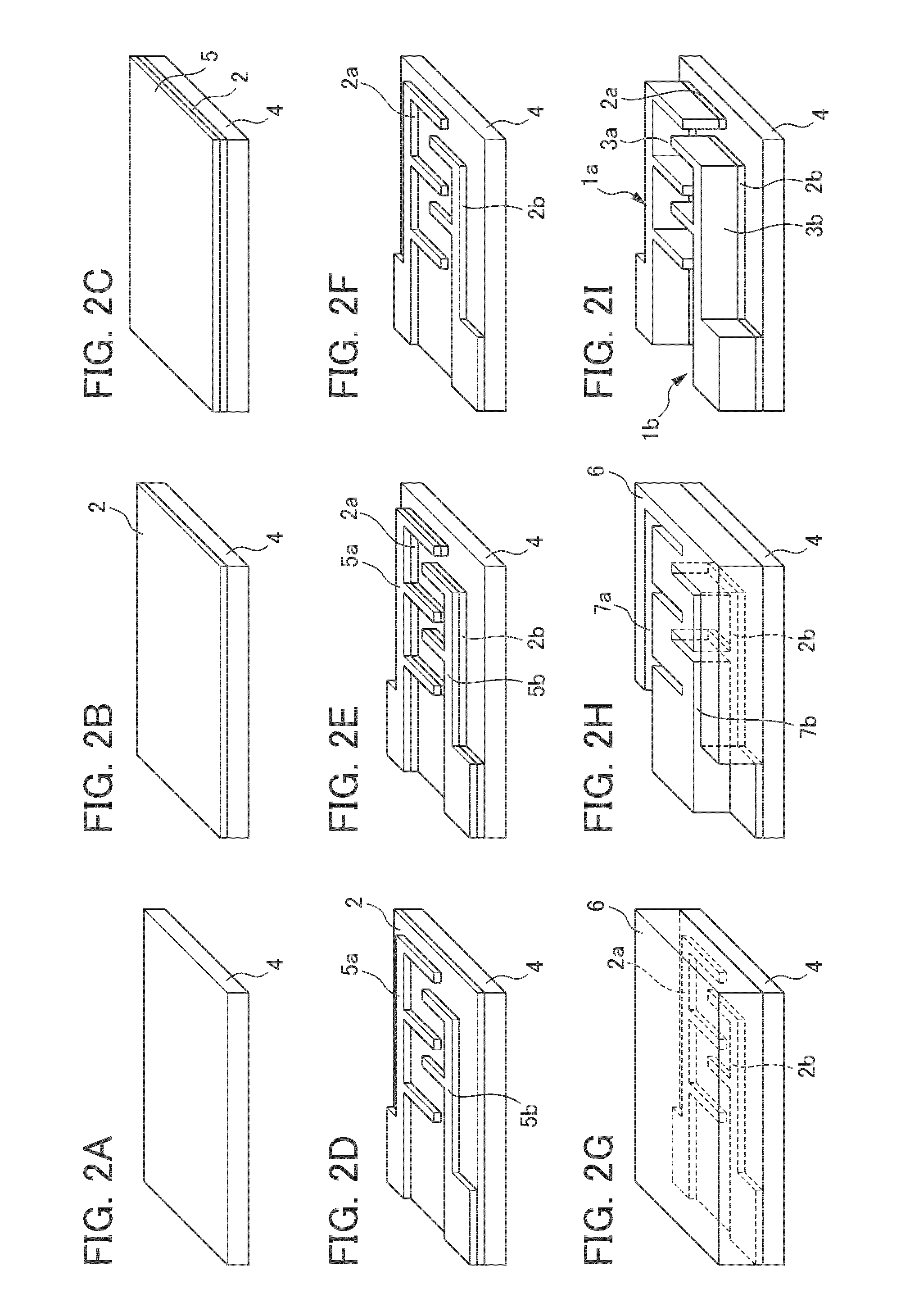Method for producing comb-shaped electrode
a comb-shaped electrode and electrode body technology, applied in the direction of instruments, cell components, photomechanical apparatuses, etc., can solve the problem of not having a method which can precisely carry a large amount of active materials
- Summary
- Abstract
- Description
- Claims
- Application Information
AI Technical Summary
Benefits of technology
Problems solved by technology
Method used
Image
Examples
example 1
To 48 parts by mass of a cresol-type novolak resin (m-cresol:p-cresol=6:4 (mass ratio), mass average molecular mass: 20,000), 12 parts by mass of a copolymer of p-hydroxystyrene and styrene (hydroxystyrene:styrene=85:15 (mass ratio), mass average molecular mass: 2,500), 40 parts by mass of a copolymer of acrylic acid 1-ethylcyclohexyl ester, butyl acrylate, acrylic acid and 2-methoxyethyl acrylate (composition ratio: 10:2:1:8 (mass ratio), mass average molecular mass: 250,000), 1 parts by mass of [2-(propylsulfonyl oxyimino)-2,3-dihydrothiophene-3-ylidene](o-tolyl)acetonitrile (IRGACURE PAG103 (article name), manufactured by Ciba Specialty Chemicals Inc.) as a photo-acid-generating agent and 0.1 parts by mass of triethanolamine, propylene glycol monomethyl ether acetate (PGMEA) was added as a solvent in a solid content of 40% by mass, followed by mixing and dissolving thereof, thereby preparing a resist composition of Example 1. The resist composition of Example 1 is a chemically-am...
example 2
To 70 parts by mass of a cresol-type novolak resin (m-cresol:p-cresol=6:4 (mass ratio), mass average molecular mass: 30,000), 15 parts by mass of naphthoquinone-1,2-diazido-5-sulfonic acid diester of 1,4-bis(4-hydroxyphenyl isopropylidenyl)benzene as a photosensitizing agent and 15 parts by mass of polymethyl vinyl ether (mass average molecular mass: 100,000) as a plasticizer, PGMEA was added as a solvent in a solid content of 40% by mass, followed by mixing and dissolving thereof, thereby preparing a resist composition of Example 2. The resist composition of Example 2 is a novolak and positive type.
example 3
To 100 parts by mass of 8-functional bisphenol A novolak-type epoxy resin (manufactured by Japan Epoxy Resin Co., product name: jER157S70), 3 parts by mass of 4-(2-chloro-4-benzoylphenylthio)phenyl bis(4-fluorophenyl)sulfonium hexafluoro antimonate as a cationic polymerization initiator (manufactured by ADEKA Co., SP-172), 1 parts by mass of 1-naphthol as a sensitizer and 5 parts by mass of 3-glycidoxypropyl trimethoxysilane, PGMEA was added as a solvent in a solid content of 70% by mass, followed by mixing and dissolving thereof, thereby preparing a resist composition of Example 3. The resist composition of Example 3 is a cationic polymerization and negative type.
PUM
| Property | Measurement | Unit |
|---|---|---|
| Composition | aaaaa | aaaaa |
Abstract
Description
Claims
Application Information
 Login to View More
Login to View More - R&D
- Intellectual Property
- Life Sciences
- Materials
- Tech Scout
- Unparalleled Data Quality
- Higher Quality Content
- 60% Fewer Hallucinations
Browse by: Latest US Patents, China's latest patents, Technical Efficacy Thesaurus, Application Domain, Technology Topic, Popular Technical Reports.
© 2025 PatSnap. All rights reserved.Legal|Privacy policy|Modern Slavery Act Transparency Statement|Sitemap|About US| Contact US: help@patsnap.com



